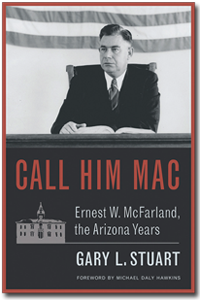Well, it’s that time again—elections, rejections, threats, and the smell of retribution in the air. Pens, crayons, and keyboards are up everywhere. For some, mostly nonwriters, it’s caucus time. To write about caucusing requires a quick dictionary glance.
When used as a noun, the Oxford Dictionary reminds us: “A caucus is a meeting at which local members of a political party register their preference among candidates running for office or select delegates to attend a convention.” Scrolling will reveal that technically speaking, it’s a conference of members of a legislative body who belong to a particular party or faction. That’s helpful because we seem to have an abundance of factions these days. And, lest we leave one nit not picked, some people who caucus actually talk about strategy, tactics, winning at all costs, and grinding their sausage in separate corners of high school gyms.
The word sometimes challenges people with trouble sounding strange words out. That might be because the word caucus stems from the Algonquian mid-18th century advisor, as in cau’-as’ u’ adviser. It can also stand for people with like views, prejudices, biases, preferences, tastes, and habits.
The U.S. government officially likes it because it gives citizens and others a chance to choose their presidential nominees.[1] Once that’s done, everything gets complicated—after all, it’s government, right? Some states like caucuses. Most don’t. Those that do hold them six to nine months before a presidential election. Primary voters choose their preferred candidate anonymously by casting secret ballots. The state where the primary is held takes the results of the vote into account to award delegates to the winners. Most do it differently, so no one gets overly consistent. They are run by political parties, which alone explains the complexities, lack of context, and winner-take-all mentality.
To add to the stew, depending on state and political party rules, primaries and caucuses can be open, closed, or both. In some states, voters need not be registered with a political party to participate in its primary or caucus. In those states, just to make it more confusing, if the caucus is closed, then only voters registered with that party can participate and vote. And we have states that claim to be semi-open or semi-closed. For those who follow their favorite color, some states are designated as blue, others red, and confused states can be purple. Being purple might someday be grounds for inclusion in the widely available DSM-5-TR, the standard classification of mental disorders used by mental health professionals in the United States and some of its territories.
Once upon a time, back when the country was undivided, there was a special kind of caucus then known as the Caucuses of the United States Congress.
“A congressional caucus is a group of members of the United States Congress that meets to pursue common legislative objectives. Formally, caucuses are formed as Congressional Member Organizations (CMOs) through the United States House of Representatives and governed under the rules of that chamber. Caucuses are informal in the Senate, and unlike their House counterparts, Senate groups receive neither official recognition nor funding from the chamber. In addition to the term caucus, they are sometimes called coalitions, study groups, task forces, or working groups. Caucuses typically have bipartisan membership and have co-chairs from each party.”[2]
In modern times, there are caucuses inside caucuses, enveloped with different missions, outcomes, and colors. They are not red or blue, but deep dark red festooned with multiple exclamations and all CAPS demands of what used to be called the Republican caucus of the House of Representatives. It’s now known as the Freedom Caucus.[3]
“It is generally considered to be the most conservative and furthest-right bloc within the House Republican Conference. It was formed in January 2015 by a group of conservatives and Tea Party movement members, with the aim of pushing the Republican leadership to the right. Its first chairperson, Jim Jordan, described the caucus as a smaller, more cohesive, more agile, and more active group of conservative representatives.”[4] Some say that “almost everyone hates it.”[5]
The Wilson Center is congressionally charted and claims to be “fiercely nonpartisan.”[6] That’s half right. It is fierce. It provides an overview for writers who write political history.
The growth in popularity of caucus groups is mostly a phenomenon of recent times. Although caucuses have existed since 1959, they proliferated rapidly in the late 1970s and into the 1980s, and again in 1995. Today there are 173 Congressional caucuses, the largest number to be active at any time. Most of these (107) are House caucuses; a minority (25) are in the Senate; and the rest (41) are bicameral. These statistics reveal an important truth: members of Congress are interested in policy. . . Congressional members spend most of their time catering to constituents’ needs, with an eye to reelection; but this is clearly not the case. Further, the growth in bipartisan caucuses means that Congressional members do not think only along partisan lines, as is often alleged.”[7]
So, there you have it. The House of Representatives is caucus on fire. The U.S. Senate is smoking, and the rest are bicameral. In this context, bicameral means unicameral because the freedom caucus could not care less what the U.S. Senate wants, does, or passes.
“Unlike most of the dozens of caucuses and single-issue groups on Capitol Hill, the Freedom Caucus doesn’t publicize its membership, which reportedly is by invitation only. However, Pew Research Center has identified 49 House members – 22% of the entire House GOP conference – who either belong to the Freedom Caucus or are closely aligned with it. Ideologically, Freedom Caucus members and allies are among the most conservative of House Republicans, with several falling on the rightmost end of the spectrum.”[8]
The Freedom Caucus is not focused on the House of Representatives. In 2024, it seems to be extending its reach far beyond Washington D.C. They are active against other Republican House Members who are not members of the Freedom Caucus.
“The House Freedom Caucus is tapping candidates from its state network in hopes of bringing new recruits to Congress. At least two candidates who are involved with state Freedom Caucus chapters are running for office, including in a primary against a Republican incumbent. There are currently 11 state Freedom Caucuses across the country, with the Missouri chapter launching this month. Many of these chapters are not affiliated with the D.C. Freedom Caucus, but are clearly inspired by them. . . The Freedom Caucus’ influence in Washington has gone up and down in recent years, with the 118th Congress being up. The group expends much of its energy trying to force GOP leadership to provoke governmental crises, shutdowns, and debt defaults, thinking Democrats will fall in line. These tactics have yielded little in the way of tangible results. This Congress, in particular, has been chock-full of constant stalemates on legislation due to opposition from the far right.”[9]
Originally it simply opposed House rules. Now it pushes the rest of the conference to the right on cultural issues and embraces the isolationist “America First” movement promoted by former President Donald Trump.[10]
The ethical imperatives of writing about caucuses are as fluid and debatable as writing about fascism, racism, Trumpism, and politics. They include making moral judgments about political action. But in today’s highly divisive political world, most writers on the subject do not apply foundational moral theories but rather work with mid-level ideas and principles that more closely reflect the considerations that political agents consider in making decisions and policies.[11]
Expecting morality in politics is a little like expecting clear thinking in a mental institution. That’s not to say all politicians are immoral. But it is the case that ethics is low on the list when acquiring or keeping public office is the goal.
[1] https://www.usa.gov/primaries-caucuses
[2] https://en.wikipedia.org/wiki/Caucuses_of_the_United_States_Congress
[3] https://en.wikipedia.org/wiki/Freedom_Caucus
[4] Carl, Jeremy (October 13, 2015). “The Freedom Caucus Is a Rebellion That Could Change the GOP’s Future”. Archived from the original on December 13, 2018. Retrieved March 31, 2017.
[5] Lauren Fox, Why (almost) everyone hates the House Freedom Caucus, CNN (March 24, 2017): “At first, there were just nine of them, but the group, which is considered the most right flank of the Republican conference, grew.”
[6] https://www.wilsoncenter.org/
[7] https://www.wilsoncenter.org/event/informal-congressional-caucuses-the-policy-process
[8] https://www.pewresearch.org/short-reads/2023/01/23/freedom-caucus-likely-to-play-a-bigger-role-in-new-gop-led-house-so-who-are-they/
[9] https://punchbowl.news/article/hfc-expands-at-state-level/
[10] https://punchbowl.news/article/hfc-expands-at-state-level/
[11] https://scholar.harvard.edu/files/dft/files/political_ethics-revised_10-11.pdf

I am an author and a part-time lawyer with a focus on ethics and professional discipline. I teach creative writing and ethics to law students at Arizona State University. Read my bio.
If you have an important story you want told, you can commission me to write it for you. Learn how.






 I am an author and a part-time lawyer with a focus on ethics and professional discipline. I teach creative writing and ethics to law students at Arizona State University.
I am an author and a part-time lawyer with a focus on ethics and professional discipline. I teach creative writing and ethics to law students at Arizona State University.  My latest novel is Hide & Be.
My latest novel is Hide & Be.  If you have an important story you want told, you can commission me to write it for you.
If you have an important story you want told, you can commission me to write it for you.